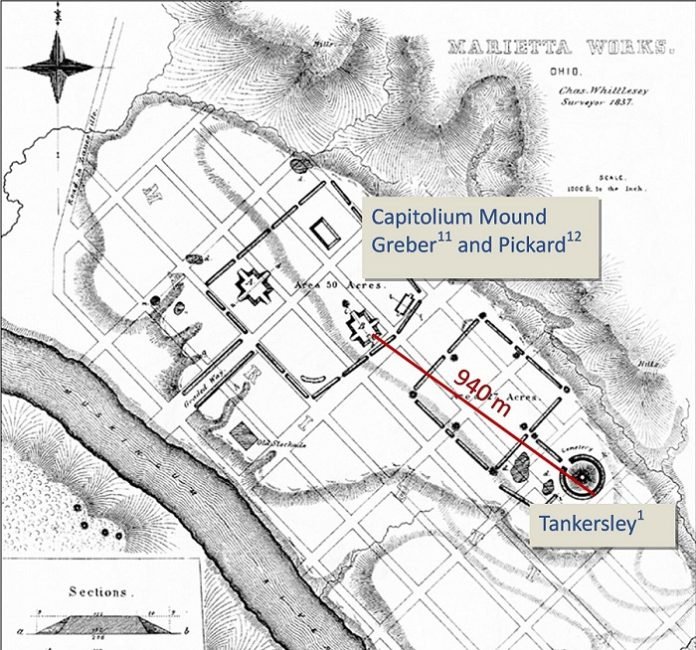
In February 2022, a science journal, Scientific Reports, shared an interesting idea. They said that a big comet exploded over today’s Cincinnati around 1,500 years ago.
This explosion supposedly caused a lot of fire to fall from the sky, destroying everything below. This was believed to be the reason why the ancient Indigenous Hopewell culture suddenly disappeared.
The person behind this idea was Dr. Kenneth Tankersley, an archaeologist from the University of Cincinnati.
He thought he found evidence at 11 ancient Hopewell sites. These places spread across the Ohio River Valley. His clues?
He found things like meteorites, tiny iron and silica balls (which he believed were from the comet), and high amounts of two metals called iridium and platinum. He found these near old Hopewell living places that had been burnt.
But, a group of experts said, “Hold on! This might not be true.”
Dr. Kevin C. Nolan, a top archaeologist at Ball State University, gathered a team of 11 other experts to check Dr. Tankersley’s findings.
This team included some who know a lot about the Hopewell culture and even someone who is an expert on meteorites from the Smithsonian Institution. Their big question: Was the comet theory right?
The answer? They didn’t think so.
Their findings were shared in the same science journal on August 9. Dr. Nolan and his team had never really worked together before, but they all wanted to make sure people knew the truth about this ancient culture.
Dr. Nolan explained that there were no signs of villages being destroyed by fire from the sky at any of the 11 places Dr. Tankersley looked at.
The burnt places that were found? They were probably burnt on purpose for special ceremonies, like honoring someone who passed away. Or, they weren’t burnt areas at all!
And what about the meteorites Dr. Tankersley found? Dr. Nolan believed that the ancient Indigenous peoples had collected them from different places and brought them to the Hopewell sites.
They probably used them for special ceremonies. The tiny iron and silica balls? They’re not from a comet. They’re just a natural part of the soil there.
Dr. Nolan and his team also checked the age of the Hopewell sites. They found that they weren’t all from the same time. This means it’s unlikely a comet destroyed them all at once.
In the end, Dr. Nolan said there was no comet explosion like Dr. Tankersley thought. And the ancient Hopewell culture didn’t just disappear after such an event.
Instead, some things they used to do, like building big earthworks and collecting special materials from faraway places, did stop around the year 400. But the people didn’t disappear. Their way of life just changed a bit, probably because of changes in their beliefs and community ties.
Lastly, Dr. Nolan was worried about how the comet theory was presented. He found many mistakes and even thought some data might have been changed on purpose. He and his team wanted to make sure people knew the real story about the Hopewell culture.
Follow us on Twitter for more articles about this topic.
Source: Ball State University.



